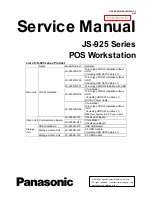
Manual – Neon 2000 Family NRT & NRM
Unidata Manual - Neon 2000 Family Remote Terminals and Modules Issue 4.0.docx
Page 10
3.0
NRT/NRM GETTING STARTED
Neon Terminals (NRT/NRM units) are small, ultra-low power microprocessor-based
devices designed to collect data from data loggers and SDI-12 instruments. This data is
then sent via GPRS Cellular Networks or Satellite packet data to a Neon server on a
programmed schedule, or as required for alerts.
The NRT/NRM also incorporates a fully-programmable data logger, so that simple
analogue and digital signals may be directly connected and recorded.
There are two models of the NRT/NRM Terminal
3.1
NRT/NRM Terrestrial
This is an NRT/NRM with a cellular based modem for use with cellular networks. These
networks may be GSM/ GPRS, CDME or Wideband CDMA (sometimes called Next G or
3G).
3.2
NRT/NRM Satellite
This is an NRT/NRM with a Globalstar Low Earth Orbit Satellite modem used on the
Globalstar Satellite Network. The service is a very similar service to GPRS in regard to
data.
3.3
NRT/NRM LED indicators
The simplest indicator is the red LED which is visible in the window of the unit.
On first power on the LED will be brightly on (not flashing) for 10 seconds indicating the
unit is in the process of being reset. Do not interrupt this initial start up process. If the
initial start up is interrupted you should power down, wait a few minutes, and then power
up again.
•
Slow brightly flashing LED
, one flash per second approx indicates the NRT/NRM
is now communicating AT commands for setup with the internal modem. This
process takes approximately 10 to 20 seconds.
•
Fast brightly flashing LED
, 3 to 5 flashes per second, indicates the PPP session is
running and the NRT/NRM is communicating through the internal modem to the host
server. If the NRT/NRM is programmed to holds the PPP session open all the time,
i.e. .the always on mode, the LED will continue to flash at this rate.
•
Slow ( once per second) dimly flashing
LED indicates the NRT/NRM is operating,
normal operation, sleeping, but no communication is in progress, i.e. The NRT/NRM
has been programmed to log data and only establish communications at the defined
reporting interval which is set up in the Scheme / FPO file.
•
Very occasional bright single flash
indicates the scheme is active / logging rather
than sleeping at that particular time, i.e. If you have a scheme which has a 5 second
scan rate you will see 4 dim flashes indicating asleep then one bright flash indicating
a scan is in progress, then another 4 dim led flashes, hence the LED will have a
bright flash every 5 seconds.















































